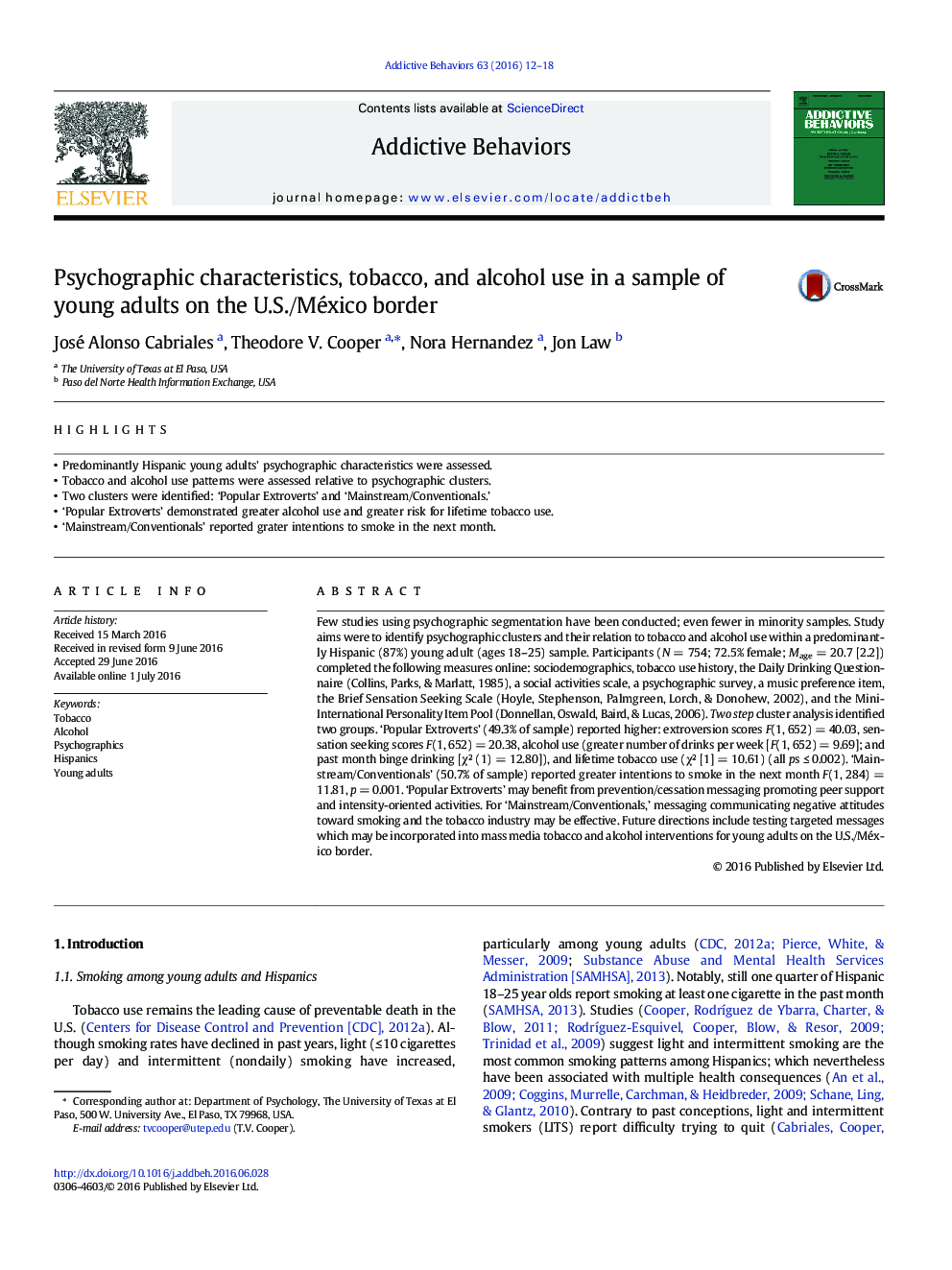| Article ID | Journal | Published Year | Pages | File Type |
|---|---|---|---|---|
| 898556 | Addictive Behaviors | 2016 | 7 Pages |
•Predominantly Hispanic young adults' psychographic characteristics were assessed.•Tobacco and alcohol use patterns were assessed relative to psychographic clusters.•Two clusters were identified: ‘Popular Extroverts’ and ‘Mainstream/Conventionals.’•‘Popular Extroverts’ demonstrated greater alcohol use and greater risk for lifetime tobacco use.•‘Mainstream/Conventionals’ reported grater intentions to smoke in the next month.
Few studies using psychographic segmentation have been conducted; even fewer in minority samples. Study aims were to identify psychographic clusters and their relation to tobacco and alcohol use within a predominantly Hispanic (87%) young adult (ages 18–25) sample. Participants (N = 754; 72.5% female; Mage = 20.7 [2.2]) completed the following measures online: sociodemographics, tobacco use history, the Daily Drinking Questionnaire (Collins, Parks, & Marlatt, 1985), a social activities scale, a psychographic survey, a music preference item, the Brief Sensation Seeking Scale (Hoyle, Stephenson, Palmgreen, Lorch, & Donohew, 2002), and the Mini-International Personality Item Pool (Donnellan, Oswald, Baird, & Lucas, 2006). Two step cluster analysis identified two groups. ‘Popular Extroverts’ (49.3% of sample) reported higher: extroversion scores F(1, 652) = 40.03, sensation seeking scores F(1, 652) = 20.38, alcohol use (greater number of drinks per week [F(1, 652) = 9.69]; and past month binge drinking [χ² (1) = 12.80]), and lifetime tobacco use (χ² [1] = 10.61) (all ps ≤ 0.002). ‘Mainstream/Conventionals’ (50.7% of sample) reported greater intentions to smoke in the next month F(1, 284) = 11.81, p = 0.001. ‘Popular Extroverts’ may benefit from prevention/cessation messaging promoting peer support and intensity-oriented activities. For ‘Mainstream/Conventionals,’ messaging communicating negative attitudes toward smoking and the tobacco industry may be effective. Future directions include testing targeted messages which may be incorporated into mass media tobacco and alcohol interventions for young adults on the U.S./México border.
